Internal combustion engines (ICE) are both a blessing and a curse. They are mechanically simple and enable very long flight times. However, the design and tuning of them can sometimes feel like more of an art than a science.
Comparing them with electric motors, even a small carbureted 4-stroke ICE can burn gasoline at a rate equivalent to a specific energy of 2,000 W*hr/kg. For comparison, the better lithium ion cylindrical battery cells can only reach 240 W*hr/kg if used slowly. Not only does the ICE/gasoline have an order of magnitude better specific energy performance, but the vehicle gets lighter as fuel is burned and requires less power to remain airborne whereas a battery-powered vehicle's weight remains constant.
I took apart my first glow 2-stroke engine at age 12, started working on motorcycles at age 16, and rebuilt Stihl chainsaws on rainy weekends as a side-hussle up in Alaska in my early 20's. Based on that, one would think that I love internal combustion engines, but I very much do not. I view them as a necessary evil .. and often times a huge pain in the rear. Even at 1/10 the endurance, the fact that electric propulsion is so simple to implement, operate, and maintain is why it remains a valid design option.
After spending many hours designing, building, and testing the the Honda GX25 engine package for Gooney Bird, I've decided that it remains lacking for this application. It always started and ran dependably and would be adequate to beat the current 32-hour VTOL endurance record -- and do so while operating at 4,000 feet MSL over the Alvord Desert with a 50% fuel load. However, performance would be marginal at that altitude with a 100% fuel load. Rather than make a record flight attempt and then re-engine the vehicle, I've decided to 'bite the bullet' and focus on a more powerful engine for all flights.
I bench tested a 37cc stratified combustion 2-stroke engine. This engine seemed to have good top-end power, but it had poor mixture control. Given the inherently complicated nature of a custom intake manifold for a stratified combustion engine with multiple intakes and throttle valves, I decided not to pursue this path .. at least for now. Perhaps this will be a future science project.
I also tested a more conventional OS GF30 II gasoline 4-stroke engine and am happy with it so far. Work is ongoing but with the higher compression ratio, fuel flows during loiter power levels are looking comparable to the GX25 .. and it has considerably more top-end power. Because the GF30 is a pre-mix engine, I don't have to worry about lubrication while running it at low revs. I was always worried about operating the GX25 at under 3,500 RPM for extended periods as it has a wet sump/slinger type lubrication system.
Pictures from the past 10 days are below.
Comparing them with electric motors, even a small carbureted 4-stroke ICE can burn gasoline at a rate equivalent to a specific energy of 2,000 W*hr/kg. For comparison, the better lithium ion cylindrical battery cells can only reach 240 W*hr/kg if used slowly. Not only does the ICE/gasoline have an order of magnitude better specific energy performance, but the vehicle gets lighter as fuel is burned and requires less power to remain airborne whereas a battery-powered vehicle's weight remains constant.
I took apart my first glow 2-stroke engine at age 12, started working on motorcycles at age 16, and rebuilt Stihl chainsaws on rainy weekends as a side-hussle up in Alaska in my early 20's. Based on that, one would think that I love internal combustion engines, but I very much do not. I view them as a necessary evil .. and often times a huge pain in the rear. Even at 1/10 the endurance, the fact that electric propulsion is so simple to implement, operate, and maintain is why it remains a valid design option.
After spending many hours designing, building, and testing the the Honda GX25 engine package for Gooney Bird, I've decided that it remains lacking for this application. It always started and ran dependably and would be adequate to beat the current 32-hour VTOL endurance record -- and do so while operating at 4,000 feet MSL over the Alvord Desert with a 50% fuel load. However, performance would be marginal at that altitude with a 100% fuel load. Rather than make a record flight attempt and then re-engine the vehicle, I've decided to 'bite the bullet' and focus on a more powerful engine for all flights.
I bench tested a 37cc stratified combustion 2-stroke engine. This engine seemed to have good top-end power, but it had poor mixture control. Given the inherently complicated nature of a custom intake manifold for a stratified combustion engine with multiple intakes and throttle valves, I decided not to pursue this path .. at least for now. Perhaps this will be a future science project.
I also tested a more conventional OS GF30 II gasoline 4-stroke engine and am happy with it so far. Work is ongoing but with the higher compression ratio, fuel flows during loiter power levels are looking comparable to the GX25 .. and it has considerably more top-end power. Because the GF30 is a pre-mix engine, I don't have to worry about lubrication while running it at low revs. I was always worried about operating the GX25 at under 3,500 RPM for extended periods as it has a wet sump/slinger type lubrication system.
Pictures from the past 10 days are below.
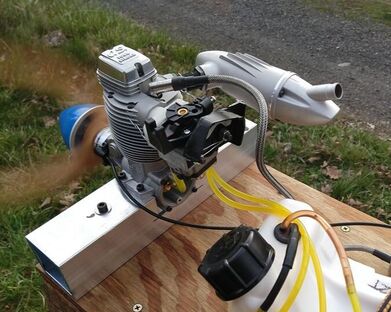
The OS GF30 II engine arrived March 6th. Within 24 hours I had designed, printed, installed, and started running with two different 3D printed nylon intake manifolds. Nylon has both chemical resistance and heat resistance but you need an all-metal print head to make parts with an FDM printer. It is shown running with a Walbro WYB carburettor.
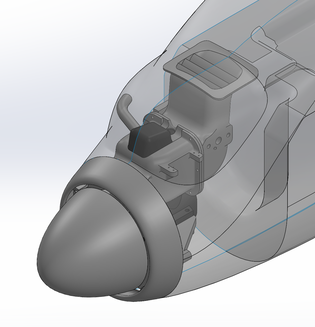
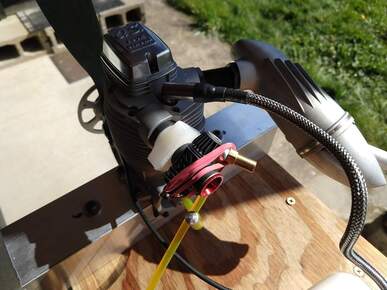
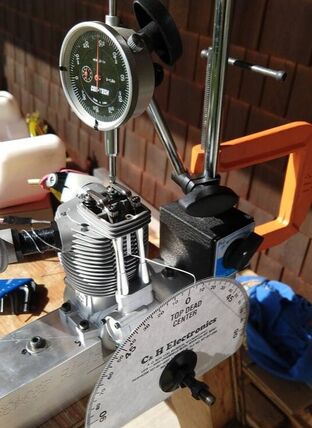
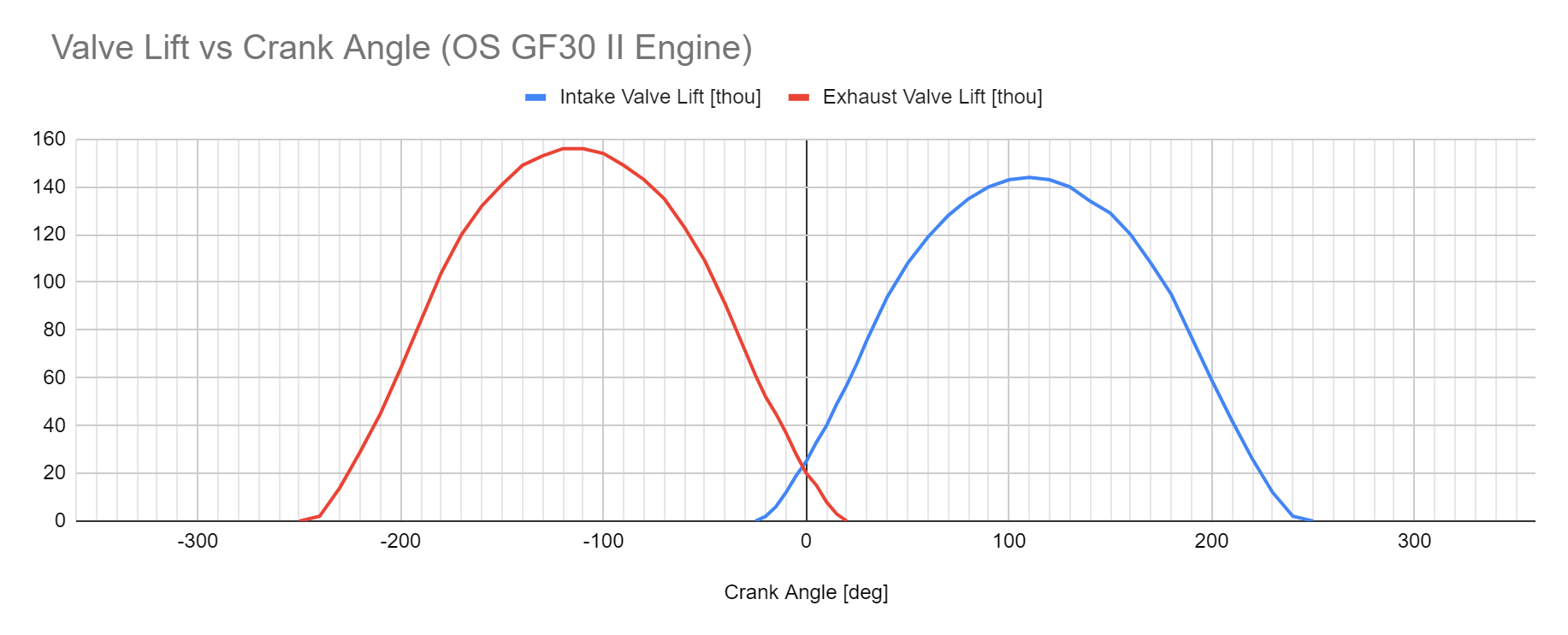
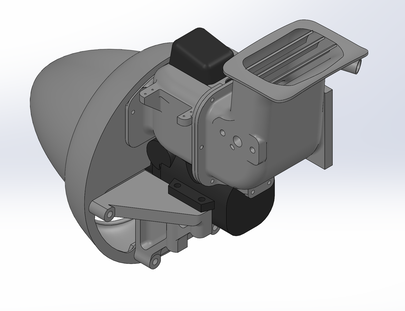
 RSS Feed
RSS Feed
